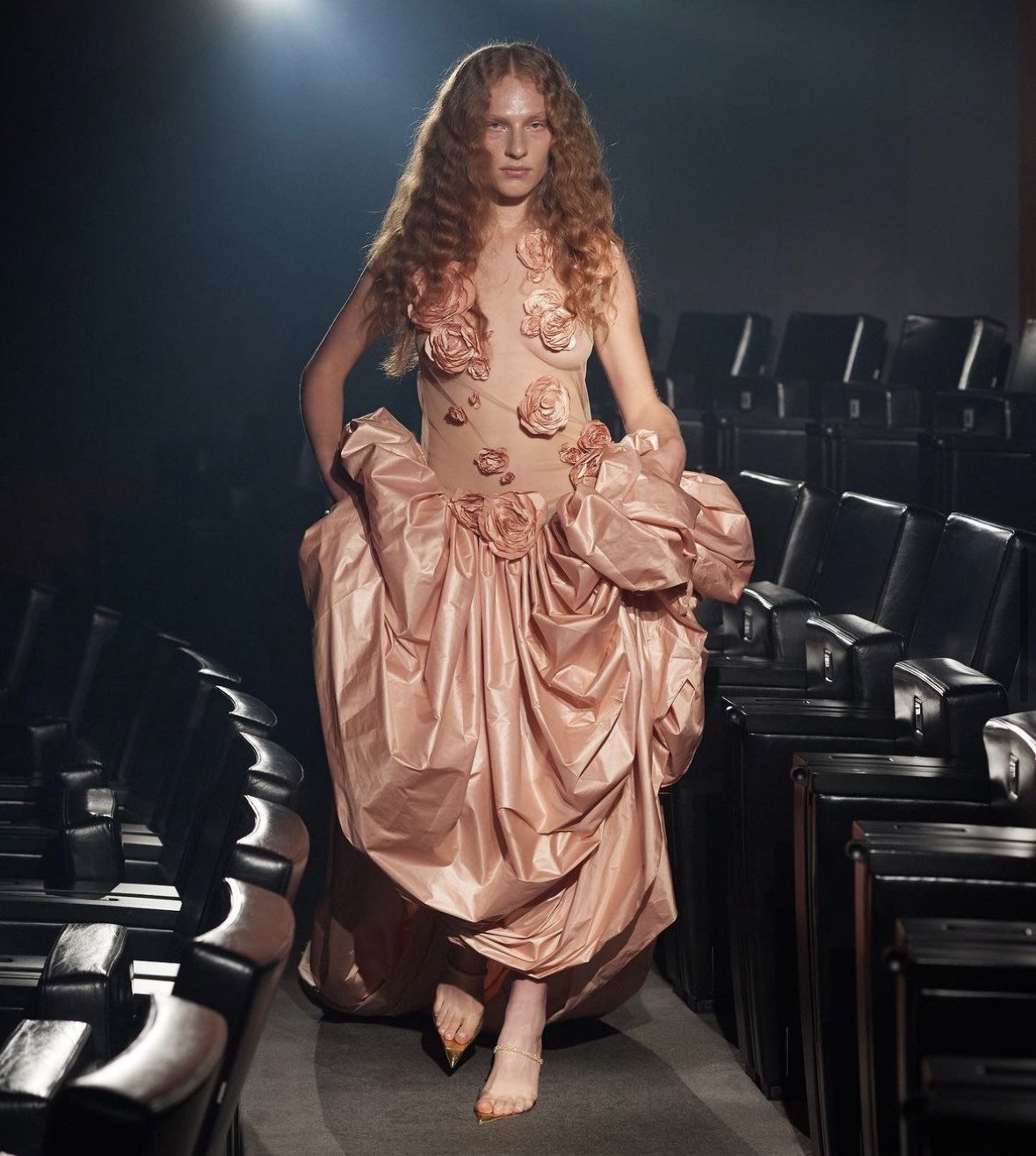Junon & Venus: The Famed Dior Gowns
Occasionally, a celebrity arrives on a red carpet in a gown that takes your breath away, making the whole world stop in unadulterated awe. That wonderment was on exhibition when actress Natalie Portman attended the Cannes Film Festival premiere of Todd Haynes’ MAY DECEMBER. Portman elegantly strolled down the bright red carpet in the Christian Dior ‘Junon’ gown from the Dior FW 1949 collection in a moment that has sent shockwaves through the hearts of all fashion enthusiasts. Of course, Portman was actually wearing a replica recreation created by the house of Dior solely for her. Due to the sewing thread used on the original gown, any significant movement of the items results in some degree of embellishment loss and is now strictly monitored in museum and conservation settings.
The ‘Junon’ Gown, Dior. AW1949.
‘When a dress of fairy-tale beauty, its petaled skirt embroidered in jewelled beads the color of a dragonfly’s wings was shown, this great couturier demonstrated his mastery of his materials.’ These sanguine words from The New York Times review of Christian Dior’s AW49 collection sum up one of the world’s most recognisable gowns in a neat, no doubt embellished, bow. Usually focused on designing for a multitude of different artistic and physical lines, for his Winter collection of 1949 Dior decided to take on a different approach. Entitled The ‘Milieu du Siècle’ (Mid-Century) collection, Dior explained that the collection was ‘founded on a system of cutting based on the internal geometry of the material. I have mentioned earlier the importance of the grain of the material: at this period, my models exploited it to the utmost.’ Indeed, the collection as a whole felt expertly draped with silhouette, as always, a focal point.
After showing an array of daywear fit for the expensive, fashion-forward modern-day woman, along came two astonishing gowns that would go down in the fashion history books. Christened ‘Junon’, the most famous of the sisters, this ostentatious gown featured a most magnificent full skirt constructed using elaborately embellished petals in a cascading pattern leaving the wearer resembling a budding flower during May. Placed on a foundation of pale silk net, the gown moved as though it floated, like the white of a dandelion carried on the wind.
The ‘Venus’ gown, Dior. AW1949.
Named after Juno, the ancient Roman goddess associated with birth, the gown brimming with grace and beauty represented the growth Dior had bought to popular silhouettes (The New Look in 1947) as well as the swelling changes in society post-war.
While Junon may receive the most recognition, she does have an equally heavenly sister, Venus. Named after the goddess of love, Venus takes the petals of the Junon gown, downsizes and carries them to the back of the gown allowing for a large, yet balanced, tulle skirt to carry the gown, and wearer, forwards. Enchanting and captivating, the Venus gown acts as Junon’s older, somewhat more experienced and mature older sister. While Junon is for the sprightly debutante, Venus is for the effortlessly wise.
The impact of Christian Dior’s work on the world of fashion and culture cannot be understated, although only at his eponymous house for a decade, it was within that decade that he fabricated an entire sartorial aesthetic that we still reference and engage with 76 years later.










